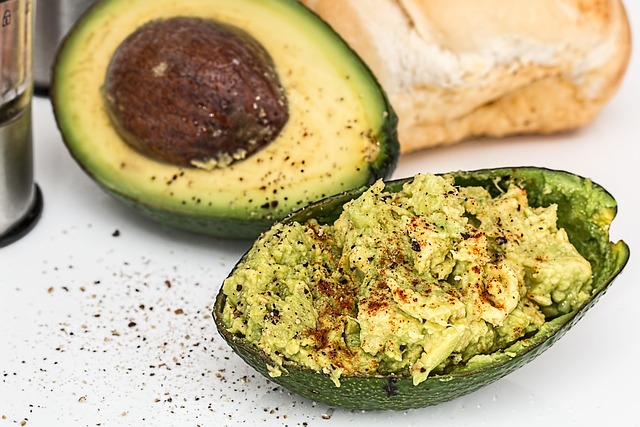In today’s fast-paced world, where work deadlines, family commitments, and social obligations often dominate our schedules, finding time to prepare nutritious meals can feel like an impossible task. Many people resort to takeout or processed foods out of convenience, but these choices can take a toll on health, budget, and energy levels over time. The solution? Meal planning. By dedicating a small amount of time each week to organizing your meals, you can simplify your routine, save money, and ensure you’re eating wholesome, delicious food—even on the busiest days.
Why Meal Planning Matters
Meal planning is more than just a trendy buzzword; it’s a practical strategy that transforms how you approach food. Here’s why it’s worth incorporating into your lifestyle:
- Saves Time : Preparing meals in advance eliminates the daily stress of deciding what to cook.
- Reduces Food Waste : Planning ensures you only buy what you need, reducing spoilage and unnecessary spending.
- Promotes Healthier Choices : When you plan ahead, you’re less likely to rely on unhealthy convenience foods.
- Supports Budgeting : Knowing exactly what you’ll eat helps prevent impulse purchases at the grocery store.
- Encourages Variety : A well-thought-out plan introduces new recipes and ingredients, keeping meals exciting.
For busy individuals and families, meal planning isn’t just a luxury—it’s a necessity for maintaining balance and wellness.
How to Get Started with Meal Planning
The idea of meal planning might seem overwhelming at first, but it doesn’t have to be complicated. Follow these steps to create a system that works for your lifestyle:
1. Assess Your Schedule
- Start by reviewing your weekly calendar. Identify busy days when you’ll need quick meals and quieter evenings when you can cook from scratch.
- Consider dietary preferences, allergies, and any special occasions that might affect your menu.
2. Choose a Planning Method
- Use a notebook, spreadsheet, or meal-planning app to organize your ideas. Some popular apps include Mealime, Paprika, and Plan to Eat.
- Decide whether you want to plan daily meals, weekly menus, or even monthly rotations.
3. Pick Recipes
- Select a mix of simple, healthy recipes that appeal to your taste buds. Aim for variety to keep things interesting.
- Include one-pot meals, sheet pan dinners, or slow cooker recipes for easy preparation.
- Don’t forget snacks and breakfast options!
4. Make a Grocery List
- Once your meals are planned, write down all the ingredients you’ll need. Organize your list by category (produce, dairy, pantry staples) to streamline shopping.
- Stick to your list at the store to avoid impulse buys.
5. Prep Ahead
- Dedicate a few hours on the weekend to batch cooking and prepping ingredients. Chop vegetables, marinate proteins, or cook grains in advance to speed up weekday meals.
- Store prepped items in clear containers so they’re easy to grab and use throughout the week.
Smart Strategies for Busy Days
Even with a solid meal plan, unexpected events can disrupt your schedule. Here are some strategies to stay on track:
1. Keep Staples on Hand
- Stock your pantry, fridge, and freezer with versatile ingredients like canned beans, frozen vegetables, whole grains, eggs, and lean proteins. These can be quickly turned into last-minute meals.
2. Double Up on Recipes
- Cook larger portions and freeze leftovers for future meals. Soups, stews, casseroles, and pasta dishes freeze particularly well.
3. Use Time-Saving Tools
- Invest in kitchen gadgets like a slow cooker, Instant Pot, or air fryer to cut down on cooking time.
- Opt for pre-washed greens, pre-cut vegetables, or rotisserie chicken if you need extra convenience.
4. Embrace No-Cook Meals
- On especially hectic nights, whip up no-cook meals like salads, wraps, or grain bowls using prepped ingredients.
5. Order Mindfully
- If dining out is unavoidable, choose healthier options and portion-controlled meals. Avoid falling into the trap of frequent takeout.
Sample Weekly Meal Plan
Here’s an example of a balanced meal plan designed for a busy lifestyle:
Breakfasts
- Overnight oats with fruit and nuts
- Veggie-packed omelet with whole-grain toast
- Smoothie made with spinach, banana, almond milk, and protein powder
Lunches
- Grilled chicken salad with mixed greens and balsamic dressing
- Quinoa bowl with roasted vegetables and tahini sauce
- Turkey and avocado wrap with baby carrots
Dinners
- Sheet pan salmon with asparagus and sweet potatoes
- Slow cooker chili with brown rice
- Stir-fried tofu with broccoli and soba noodles
Snacks
- Greek yogurt with honey and granola
- Apple slices with almond butter
- Hummus with cucumber and bell pepper strips
This sample plan includes a mix of make-ahead meals, quick recipes, and nutrient-dense ingredients to keep you fueled and satisfied.
Overcoming Common Challenges
While meal planning offers numerous benefits, it’s not without its challenges. Here’s how to tackle common obstacles:
1. Lack of Time
- Break tasks into smaller chunks. For instance, prep vegetables one evening and cook proteins the next.
- Involve family members in meal prep to share the workload.
2. Boredom with Repetition
- Rotate through different cuisines (e.g., Mexican, Mediterranean, Asian) to keep things fresh.
- Experiment with spices and herbs to add variety to familiar dishes.
3. Unexpected Changes
- Have a “backup meal” plan, such as frozen meals or pantry staples, for days when life gets in the way.
4. Budget Constraints
- Prioritize seasonal produce and affordable protein sources like eggs, beans, and lentils.
- Buy in bulk and focus on cost-effective staples.
The Long-Term Benefits of Meal Planning
When done consistently, meal planning becomes second nature, offering long-term rewards that extend beyond convenience:
- Improved Nutrition : Eating home-cooked meals allows you to control portion sizes and ingredient quality.
- Financial Savings : Reducing reliance on restaurants and impulse buys can significantly lower food expenses.
- Reduced Stress : Knowing exactly what’s for dinner eliminates decision fatigue and makes evenings more enjoyable.
- Environmental Impact : Less food waste and fewer takeout containers contribute to a greener planet.
Final Thoughts: Make Meal Planning Work for You
Meal planning doesn’t require perfection—it’s about creating a system that fits your unique needs and priorities. Whether you’re juggling a demanding career, raising a family, or pursuing personal goals, taking charge of your meals gives you the power to nourish your body and mind, no matter how busy life gets.
Start small, stay flexible, and celebrate your progress along the way. With a little planning and preparation, you can transform mealtime from a source of stress into an opportunity for creativity, connection, and self-care. So grab a pen, open your calendar, and begin crafting a meal plan that supports your busy lifestyle—one delicious dish at a time.








